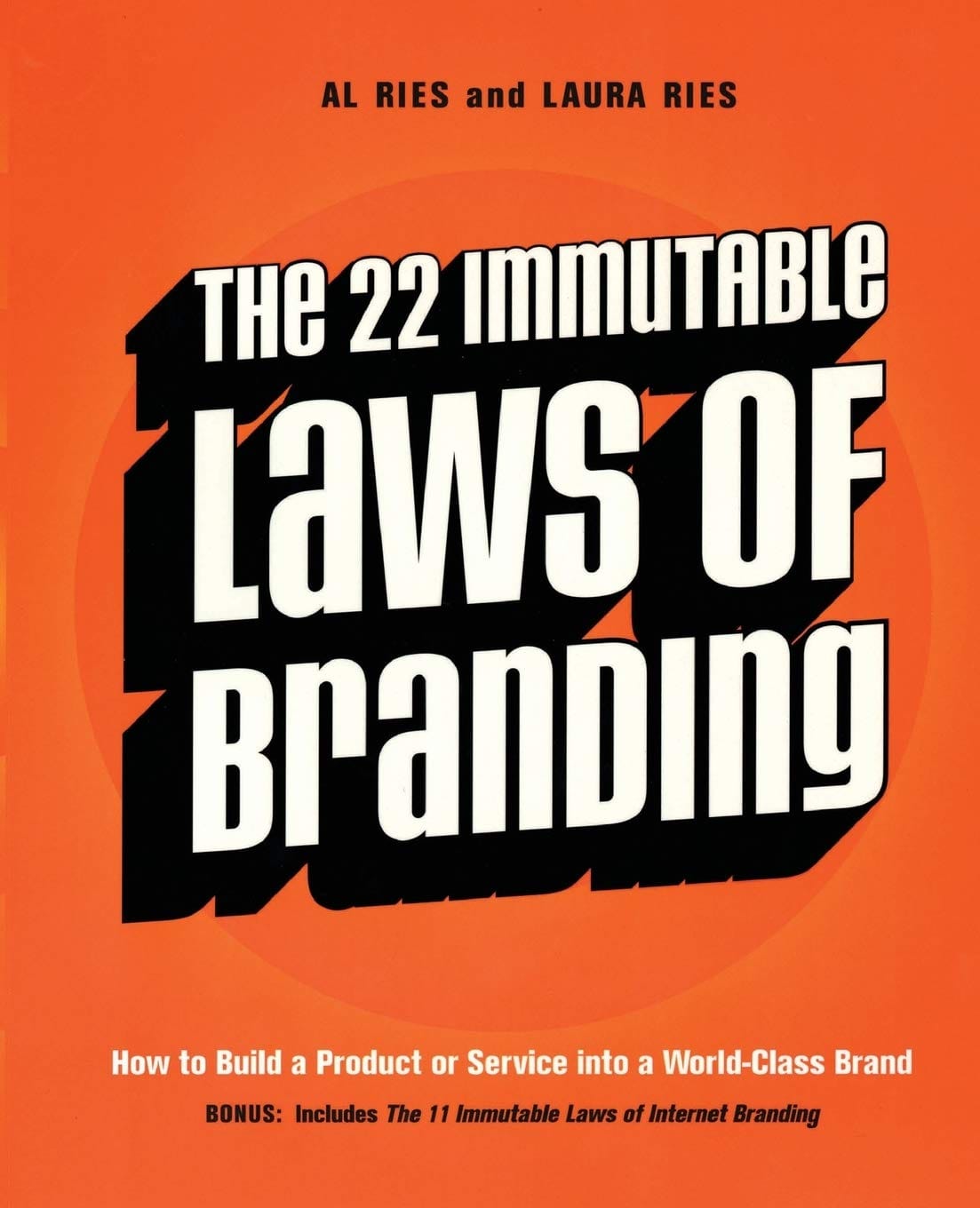The 22 Immutable Laws of Branding” by Al Ries and Laura Ries is a comprehensive guide that explores the fundamental principles of successful branding. The book outlines 22 rules or “laws” that brands should follow to create a strong market presence and achieve lasting success. Drawing from their extensive experience in marketing and brand consulting, the authors provide practical advice on building and maintaining a powerful brand identity in an increasingly competitive marketplace.
The book is structured around these 22 laws, with each chapter dedicated to a specific rule. The authors use real-world examples and case studies to illustrate the application of each law, making the concepts more relatable and actionable for readers. Key figures such as Coca-Cola, Volvo, and Apple are used as case studies to demonstrate how these laws can be applied to various industries.
Overall Thoughts and Feelings:
“The 22 Immutable Laws of Branding” offers a straightforward and insightful look into the art and science of branding. The authors’ writing style is clear and engaging, making complex branding strategies accessible to a wide audience. Al Ries and Laura Ries manage to distill their vast knowledge into concise, easily digestible chapters, making the book a quick but informative read.
Writing Style and Character Development:
The writing style of Al and Laura Ries is direct and no-nonsense, reflecting their expertise in the field of marketing and branding. They avoid technical jargon, which makes the book accessible to readers who may not have a background in branding. The “characters” in this book are the brands themselves. By focusing on well-known brands and their histories, the authors effectively illustrate the principles they are discussing.
Themes and Motifs:
A central theme in “The 22 Immutable Laws of Branding” is the importance of consistency and focus. The authors stress that a brand must have a clear and consistent message to succeed in the long term. Another significant theme is differentiation — the need for a brand to stand out in a crowded marketplace. The authors argue that brands should strive to own a word or concept in the minds of consumers to differentiate themselves from competitors.
Pacing and Structure:
The book is well-structured, with each chapter building on the last to provide a comprehensive overview of branding principles. The pacing is steady, with each law given sufficient explanation and context through examples. This methodical approach helps maintain reader interest and allows for a deep understanding of each law.
Use of Language and Imagery:
The authors use clear, concise language that is easy to follow. They employ vivid imagery when discussing branding concepts, helping to make abstract ideas more concrete. For example, they describe a brand as a “mental shorthand for what you are” — a memorable image that encapsulates the essence of effective branding.
Emotional Impact and Thought Provocation:
While the book is primarily informative, it also encourages readers to think critically about their own branding strategies. The authors challenge conventional wisdom, prompting readers to re-evaluate their assumptions about branding and consider new approaches. The emphasis on differentiation and owning a specific idea or concept is particularly thought-provoking, encouraging brands to find their unique niche in the market.
Strengths and Weaknesses:
One of the strengths of “The 22 Immutable Laws of Branding” is its simplicity and clarity. The authors break down complex branding concepts into easily understandable rules, making the book a practical guide for anyone interested in branding. However, some readers may find the book a bit repetitive, as the authors frequently reinforce the same principles throughout the chapters. Additionally, while the book provides valuable insights into branding, it may not offer much in terms of new or groundbreaking ideas for those already familiar with the subject.
Comparison to Other Works:
Compared to other books on branding, “The 22 Immutable Laws of Branding” is notable for its concise and straightforward approach. While other branding books might delve deeper into specific theories or case studies, Ries and Ries focus on delivering clear, actionable rules that can be applied to any brand. This makes the book an excellent starting point for those new to branding, though it might be less useful for more experienced marketers looking for advanced strategies.
Overall, “The 22 Immutable Laws of Branding” by Al Ries and Laura Ries is a valuable resource for anyone looking to understand the fundamentals of branding. Its clear, concise writing and practical advice make it a must-read for entrepreneurs, marketers, and business owners alike. I would rate this book 4 out of 5 stars for its practical insights and straightforward approach. It is particularly suited for those who are new to branding or looking for a refresher on key principles. More experienced marketers may find it a bit basic, but it still offers valuable reminders of the importance of consistency and differentiation in building a successful brand.
Buy on Amazon
READ ALSO: Marketing Mastery: How to Dominate Your Industry and Crush Your Competition by Jason Sylvester
REVIEWS: Computers & Accessories
Related posts:
 Book Review: The 22 Immutable Laws of Marketing by Al Ries and Jack Trout
Book Review: The 22 Immutable Laws of Marketing by Al Ries and Jack Trout
 Traffic Secrets: The Underground Playbook for Filling Your Websites and Funnels with Your Dream Customers
Traffic Secrets: The Underground Playbook for Filling Your Websites and Funnels with Your Dream Customers
 ChatGPT Side Hustles 2024: The Ultimate Guide to Leveraging AI for Passive Income
ChatGPT Side Hustles 2024: The Ultimate Guide to Leveraging AI for Passive Income
 Marketing Mastery: How to Dominate Your Industry and Crush Your Competition by Jason Sylvester
Marketing Mastery: How to Dominate Your Industry and Crush Your Competition by Jason Sylvester





Leave a Comment
You must be logged in to post a comment